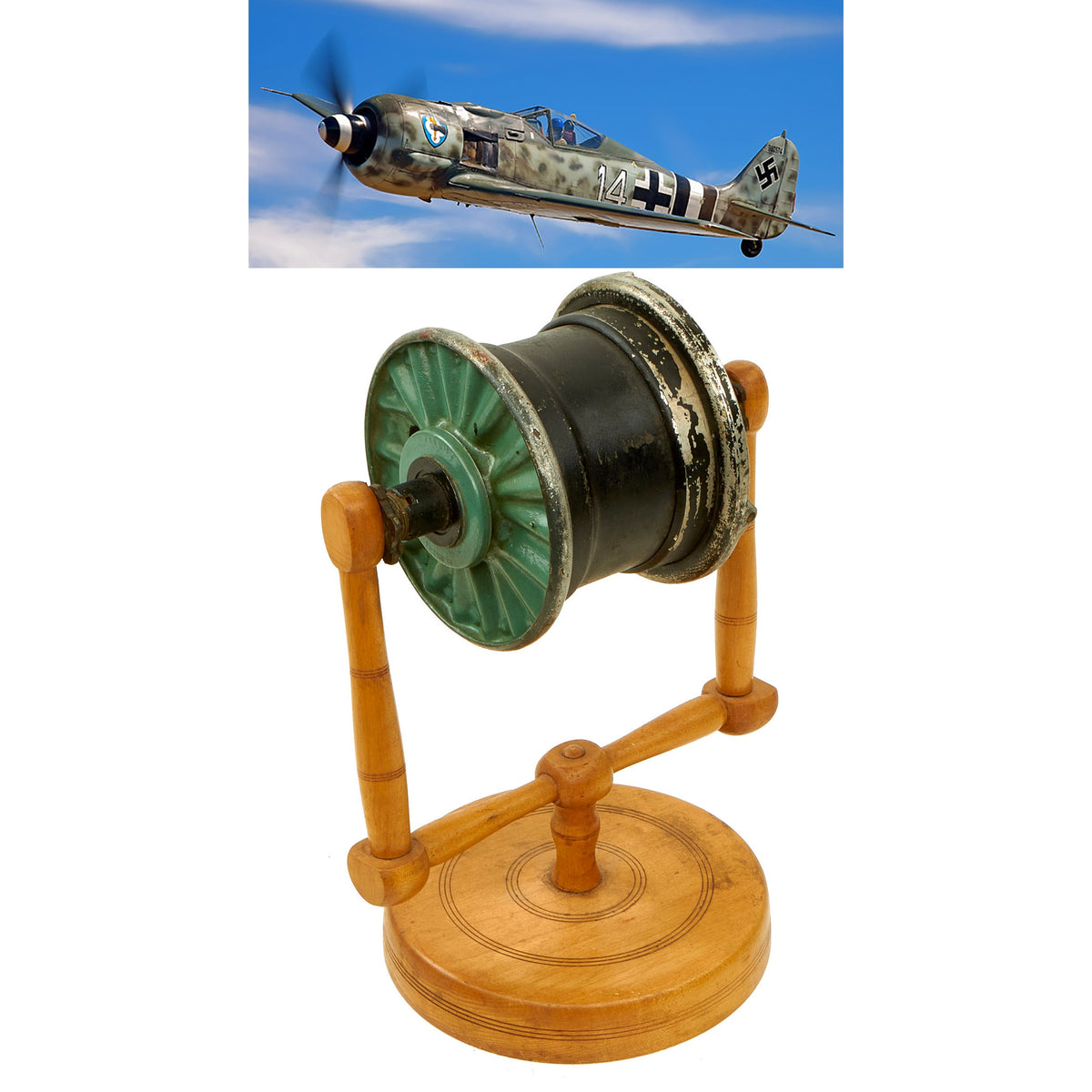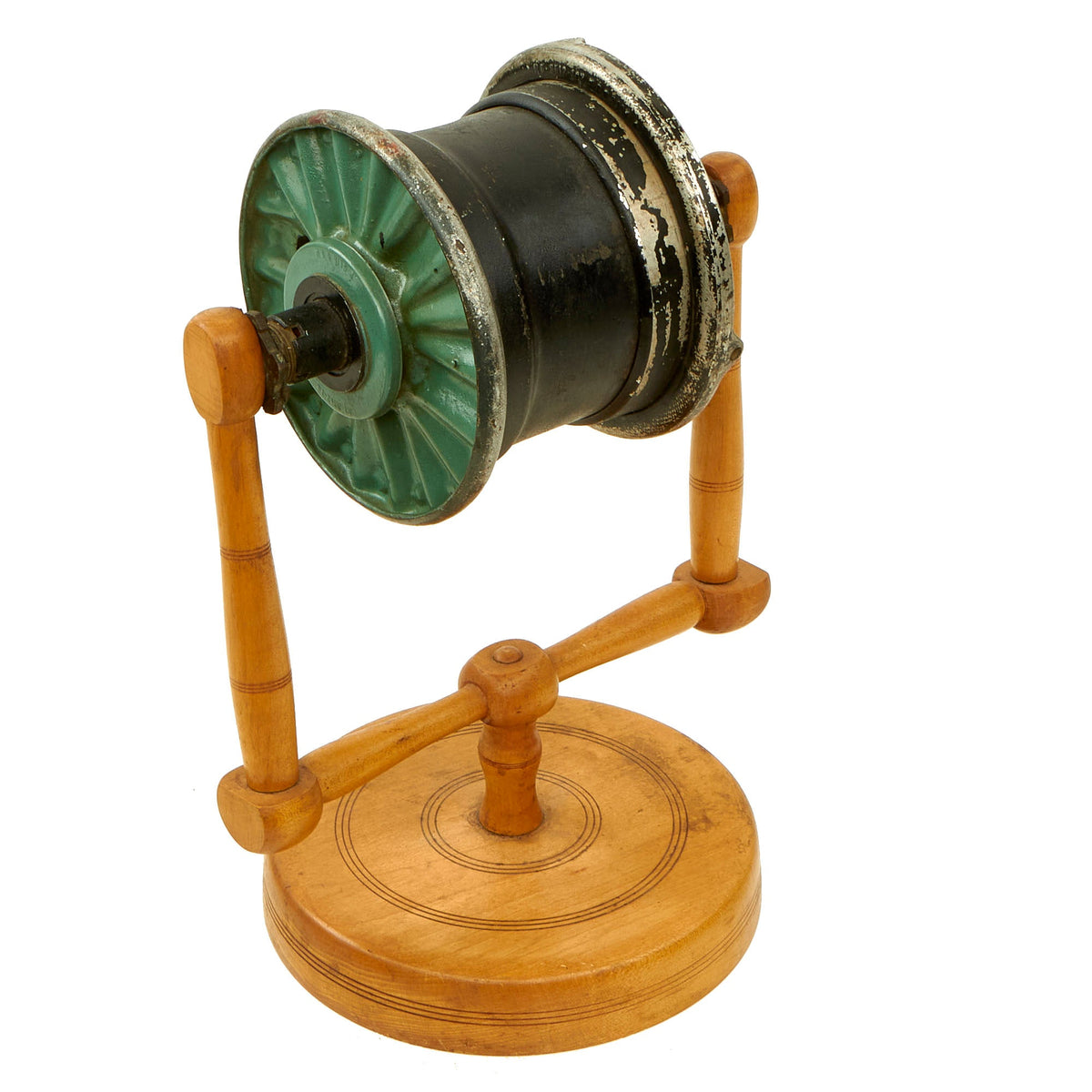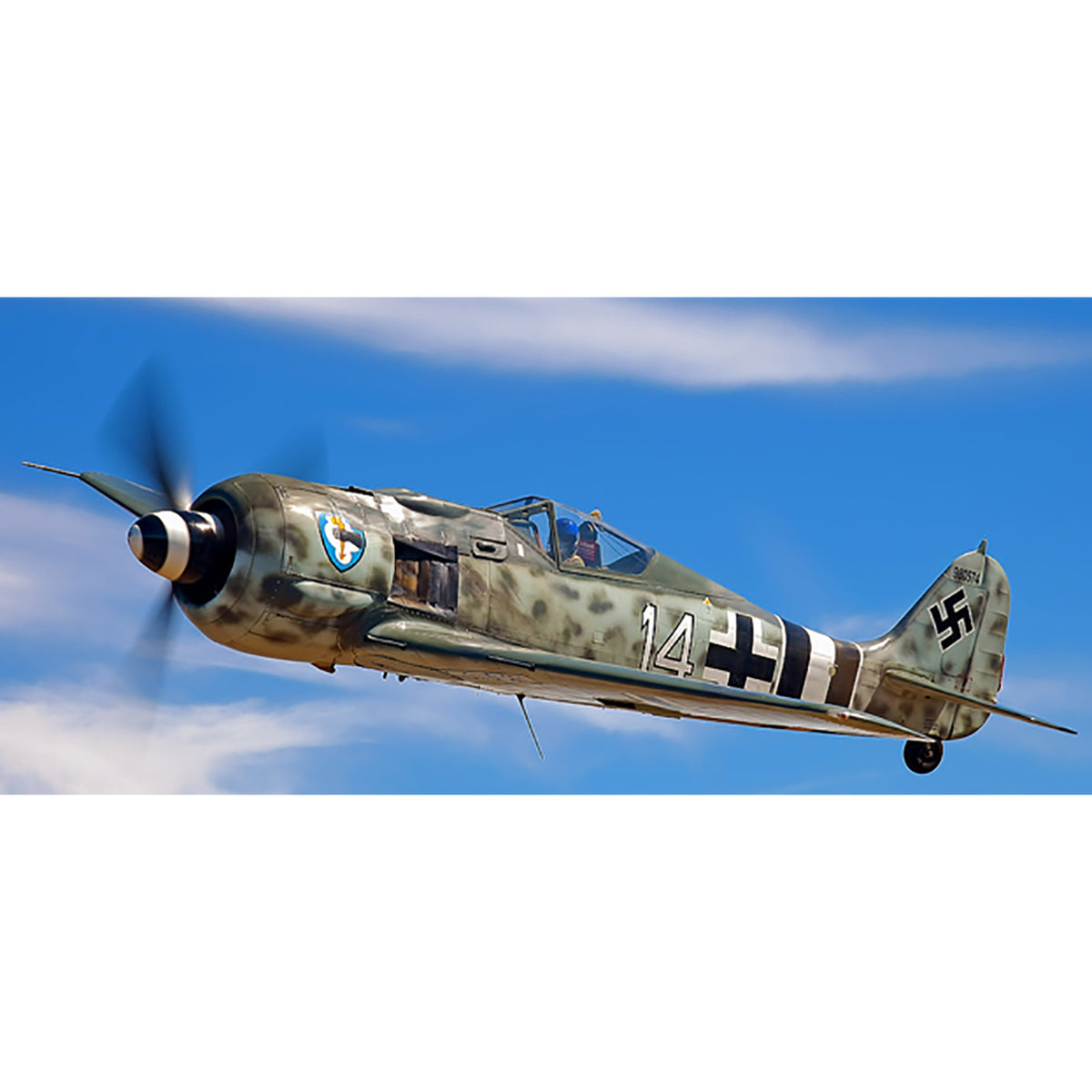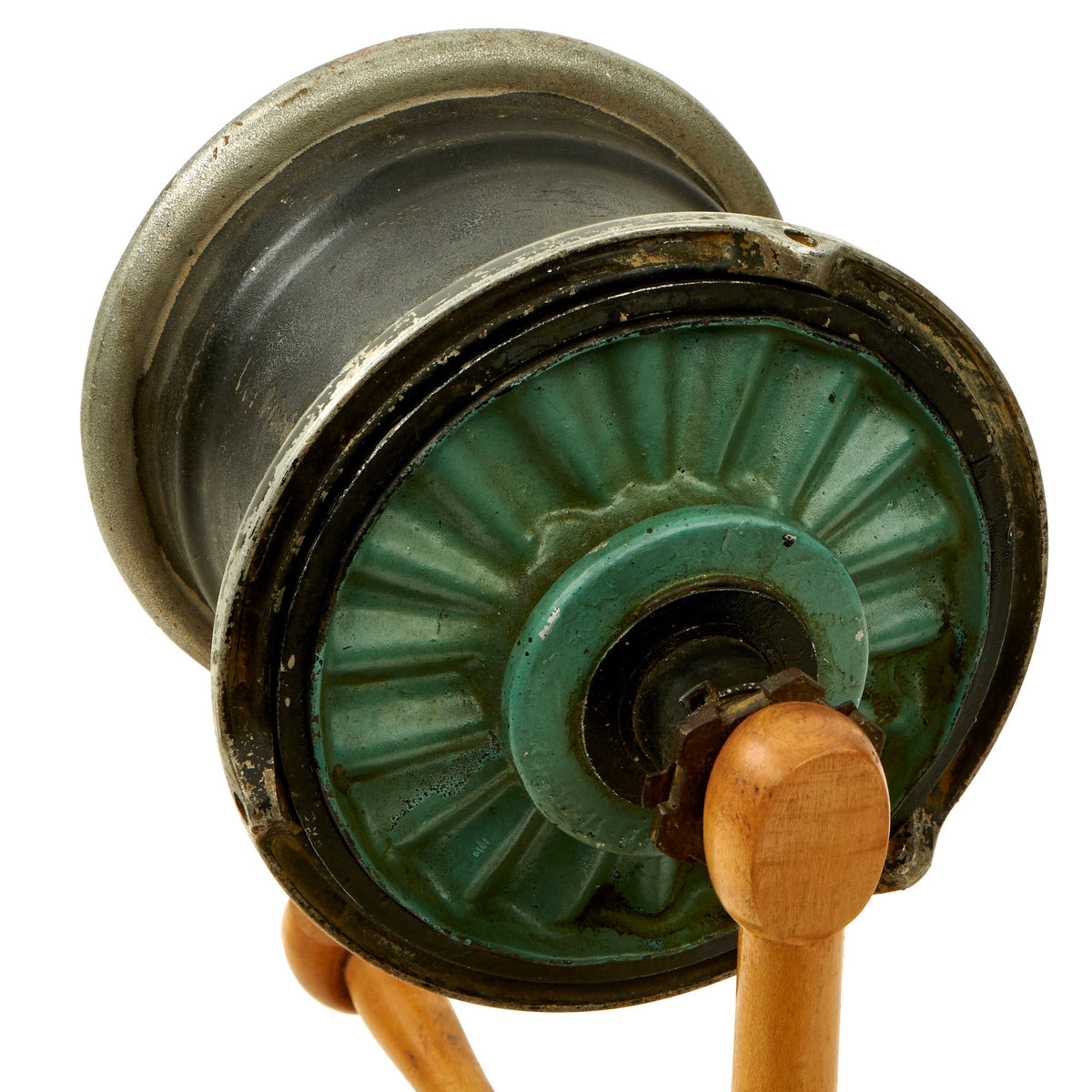Original German WWII Focke-Wulf Fw 190 Rear Wheel On Custom Display Stand with History On Bottom Original Items
$ 695,00 $ 208,50
Original Items: One-of-a-kind. These are the kinds of items that we love to see! During WWII, raising funds through War Bonds was a big responsibility, and many campaigns were organized during the war. This WWII wheel fighter plane wheel rim and bearing was obtained by Clarence B. Case, who worked to organize a War Bond Rally in Washington D.C. during early 1942, as detailed by a handwritten note on the base:
THIS IS CLAIMED TO BE A TAIL WHEEL FROM A JAPANESE FIGHTER PLANE. IT WAS OBTAINED IN WASHINGTON D.C. IN EARLY 1942 AT A WAR BOND RALLY WHICH MY FATHER CLARENCE B. CASE, THEN OF PLYMOUTH PA, HELPED TO SET UP. FRAME WAS MADE BY ME IN SHOP CLASS AT NEW CUMBERLAND, PA, HIGH SCHOOL IN 1943
C. George Case.
Close examination of the wheel did not show any Japanese markings, however after consulting pictures showing on several websites HERE and HERE, we are confident that this is definitely the rear wheel (without tire) as used on the German WWII Luftwaffe Focke-Wulf Fw 190 fighter plane, and possibly other fighter planes during the war. The markings on the bearing read F&G 3115.4 and R8-3512-14, which are consistent with markings seen on other examples. It still has the bearing covers, and looks to have been correctly removed, not cut off like a lot of examples seen. It does look to have been partly or totally repainted at some point, though we have no way of knowing when this occurred.
We do not doubt that this wheel hub was obtained at the rally, and can easily see how a German and Japanese wheel hub would get mixed up. We were at war with both, and especially after Pearl Harbor, early 1942 was the peak of Anti-Japanese sentiment. As the Fw 190 had been introduced in August 1941, it makes it very likely that the wheel was recovered from a downed Fw 190 involved in the battle of Britain, sent to the United States as an artifact to help raise funds.
The base of the wooden display stand is 8 inches in diameter, and overall height is 14 inches at the top of the wheel rim. It is solid and pivots nicely to display the wheel.
This would look perfect sitting on a desk or as part of a display!
The Focke-Wulf Fw 190 Würger (English: Shrike) is a German single-seat, single-engine fighter aircraft designed by Kurt Tank in the late 1930s and widely used during World War II. Along with its well-known counterpart, the Messerschmitt Bf 109, the Fw 190 became the backbone of the Luftwaffe’s Jagdwaffe (Fighter Force). The twin-row BMW 801 radial engine that powered most operational versions enabled the Fw 190 to lift larger loads than the Bf 109, allowing its use as a day fighter, fighter-bomber, ground-attack aircraft and, to a lesser degree, night fighter.
The Fw 190A started flying operationally over France in August 1941, and quickly proved superior in all but turn radius to the Royal Air Force’s main front-line fighter, the Spitfire Mk. V, In November/December 1942, the Fw 190 made its air combat debut on the Eastern Front, finding much success in fighter wings and specialised ground attack units called Schlachtgeschwader (Battle Wings or Strike Wings) from October 1943 onwards.
The Fw 190A series’ performance decreased at high altitudes (usually 6,000 m (20,000 ft) and above), which reduced its effectiveness as a high-altitude interceptor. From the Fw 190’s inception, there had been ongoing efforts to address this with a turbosupercharged BMW 801 in the B model, the much longer-nosed C model with efforts to also turbocharge its chosen Daimler-Benz DB 603 inverted V12 powerplant, and the similarly long-nosed D model with the Junkers Jumo 213. Problems with the turbocharger installations on the -B and -C subtypes meant only the D model entered service in September 1944. These high-altitude developments eventually led to the Focke-Wulf Ta 152, which was capable of extreme speeds at medium to high altitudes ( 755 km/h (408 kn; 469 mph) at 13,500 m (44,300 ft)). While these “long nose” 190 variants and the Ta 152 derivative especially gave the Germans parity with Allied opponents, they arrived too late to affect the outcome of the war.
The Fw 190 was well-liked by its pilots. Some of the Luftwaffe’s most successful fighter aces claimed many of their kills while flying it, including Otto Kittel, Walter Nowotny and Erich Rudorffer. The Fw 190 provided greater firepower than the Bf 109 and, at low to medium altitude, superior manoeuvrability, in the opinion of German pilots who flew both fighters. It was regarded as one of the best fighter planes of World War II
This Focke-Wulf Fw 190 propeller spinner was recovered from a former airfield where the German WW2 Luftwaffe flight group Jagdgeschwader 53 (JG53). The spinner has multiple areas of damage which appear to have been from a crash. It is constructed to Aluminum and has all original paint. The interior is nicely in red paint stenciled lettering. It measures 27″ tall and has a 20.5″ diameter. it is a fascinating piece of World War Two German Aviation History. This is quite simply put; MUSEUM collection worthy.
Fast Shipping with Professional Packaging
Thanks to our longstanding association with UPS FedEx DHL, and other major international carriers, we are able to provide a range of shipping options. Our warehouse staff is expertly trained and will wrap your products according to our exact and precise specifications. Prior to shipping, your goods will be thoroughly examined and securely secured. We ship to thousands clients each day across multiple countries. This shows how we're dedicated to be the largest retailer on the internet. Warehouses and distribution centres can be located throughout Europe as well as the USA.
Note: Orders with more than one item will be assigned a processing date depending on the item.
Before shipping before shipping, we'll conduct a thorough inspection of the items you have ordered. Today, the majority of orders will be delivered within 48 hours. The delivery time will be between 3-7 days.
Returns
The stock is dynamic and we cannot completely manage it because multiple stakeholders are involved, including our factory and warehouse. So the actual stock may alter at any time. It's possible that you may not receive your order once the order has been made.
Our policy is valid for a period of 30 days. If you don't receive the product within 30 days, we are not able to issue a refund or an exchange.
You can only return an item if it is unused and in the same state as the day you received it. You must have the item in its original packaging.
Related products
Uncategorized
Uncategorized
Uncategorized
Uncategorized
Uncategorized
Uncategorized
Australian WWII Owen MK1 Machine Carbine SMG Custom Fabricated Replica with Sling Original Items
Uncategorized
Uncategorized
Uncategorized
Uncategorized
Uncategorized
Band of Brothers ORIGINAL GERMAN WWII Le. F.H. 18 10.5cm ARTILLERY PIECE Original Items
Uncategorized
Uncategorized
Uncategorized
Uncategorized
Uncategorized













































































